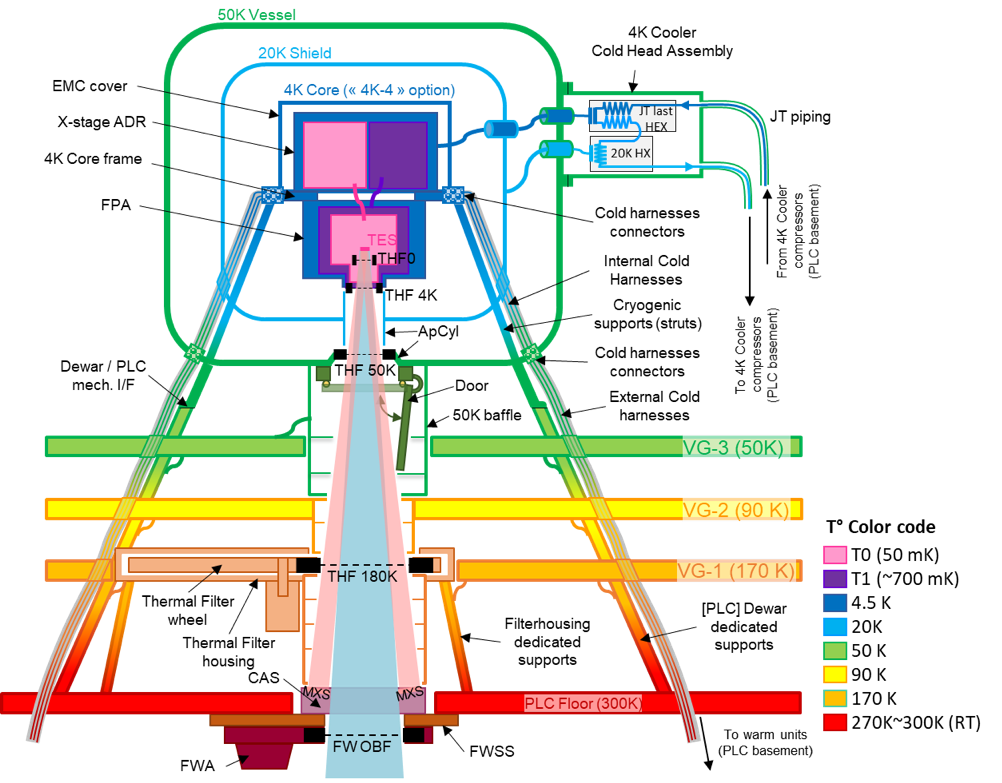
Date.
The New X-IFU Configuration as of January 2023 © CNES
Following the necessity to bring the ESA Cost at Completion below €1.3 billion, the Athena mission and the X-IFU have entered a reformulation phase shortly after last summer. Two boundary conditions were soon identified by ESA for this exercise: First, the responsibility of the X-IFU dewar should come back in the X-IFU Consortium, enabling also a drastic simplification of the interfaces between X-IFU and the payload module. Second, its active cryogenic chain shall be significantly reduced, in both scope and complexity. This led to study of two scenarios: the first consisted in using a large US 4K cooler to replace most of the X-IFU cryogenic chain while keeping a room temperature cryostat similar to the previous X-IFU. The second involved the introduction of significant passive cooling within the payload module in order to provide a colder interface to a smaller X-IFU dewar.
After studying both options during the last quarter of 2022 in collaboration with ESA and our X-IFU partners, we selected the so-called passive architecture (see figure above) as the best solution for the X-IFU and Athena to move forward. The instrument dewar is now a relatively small enclosure accommodated inside a series of increasingly colder V(L)-grooves with an interface temperature of ~ 50 K. Its colder stages (~ 20 and 4.5 K) are cooled down via JT lines by remote compressors located several meters away in the payload module “basement”. From there, the 2K JTs and hybrid cooler were replaced by a multi-stage ADR cooler to provide 4.5 K to 50 mK cooling, with the 2K core evolving towards a now 4K core. The instrument aperture is also modified with a thicker filter accommodated outside of the vacuum vessel and protected from acoustics during launch by an enclosure akin to the WFI filter wheel, for a modest penalty of low energy effective area.
From the readout perspective, very encouraging results were obtained during the summer time on new detector designs at GSFC. These slower pixels allow for a larger multiplexing factor (up to ~ 50) for the same readout performance. The loss of field of view from a reduction of the number of readout channels can thus be mitigated for an acceptable loss of count rate capability. With only 36 channels (half of the T-SRR baseline), the instrument could for instance retain more than a 4’ field of view (equivalent diameter).
Of course, this configuration departs from the previous baseline and presents a number of new technical challenges associated with a cold outer vessel, but no technical showstopper has been identified so far. Overall, we are confident that we will be able to develop a new X-IFU providing flagship science within this renewed context and look forward to the continued support of the X-IFU consortium for this challenge!
Philippe Peille
X-IFU Instrument Manager


 Youtube
Youtube